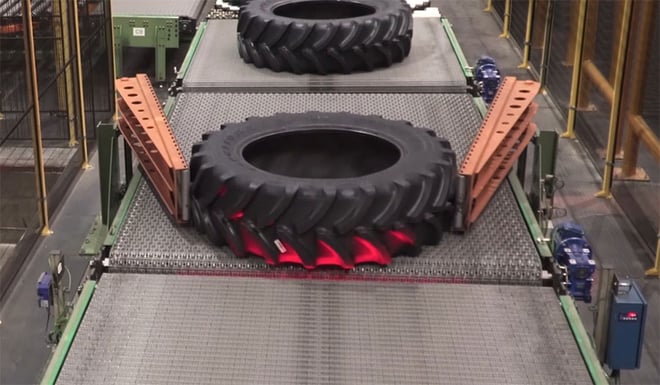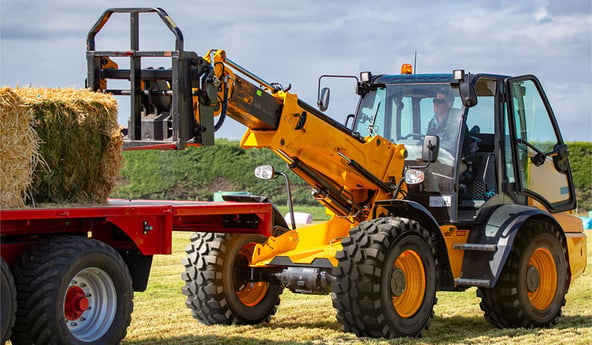It’s when it comes to renewing your tractor tyres that you are faced with the choice between a discount tyre and a quality tyre.
The price is generally a reflection of the level of quality of the materials used. Choosing a top-of-the-range model will allow you to work with heavy loads and increase your productivity, at very low inflation pressure to preserve your soil for much longer periods, because the tyre will be more resistant to wear. But where does the difference in quality lie?
In this article, we will look at the details and manufacturing techniques which will allow you to choose a top-of-the-range tyre and to understand all the advantages it brings.
1. Better quality basic materials for a longer life
The tyre’s basic material is rubber, and it is here that the differences begin between a top-quality and a lessor quality tyre.
Natural rubber (latex) comes from Hevea tree sap and has irreplaceable qualities: it is resistant, elastic, impermeable and reacts excellently to vulcanisation.
It’s the quantity of natural rubber used which will give the tyre is characteristics, such as resistance or elasticity.
Discount tyres tend to be made of synthetic rubber which is much less resistant and durable than the original version.
Companies like Bridgestone have their own plantations in Liberia so as to be able to incorporate a larger share of this pure latex in their tyres and to ensure the ecological and sustainable management of natural rubber.

The quality of a tyre is directly linked to the preparation of the tyre’s basic rubber compound, the manufacture of the rubber being the first step in this process.
The proportion of the elements comprising this rubber compound and the quality of the mixture make it possible to obtain an excellent uniform texture.
This rubber must contain the best ingredients so that it has the properties required by the future tyre: suppleness, grip, performance and resistance.
List of materials
- The rubber: naturel and synthetic rubber or elastomer are the tyre’s principal constituents, this is what allows the tyre to withstand major distortions.
- Anti-wear products: these represent 30% of the tyre mass, such as carbon black and silica. They reinforce resistance and limit wear to the tyre.
- Processing additives: such as oils, facilitate the homogenisation of the end compound.
- Chemical additives: these are generally in the form of granules or powder. They include sulphur, light coloured fillers in the form of calcium carbonate, clay or talc.
- Antioxidants, accelerants and retardants: these play a role in the physical and chemical properties of the tyre.
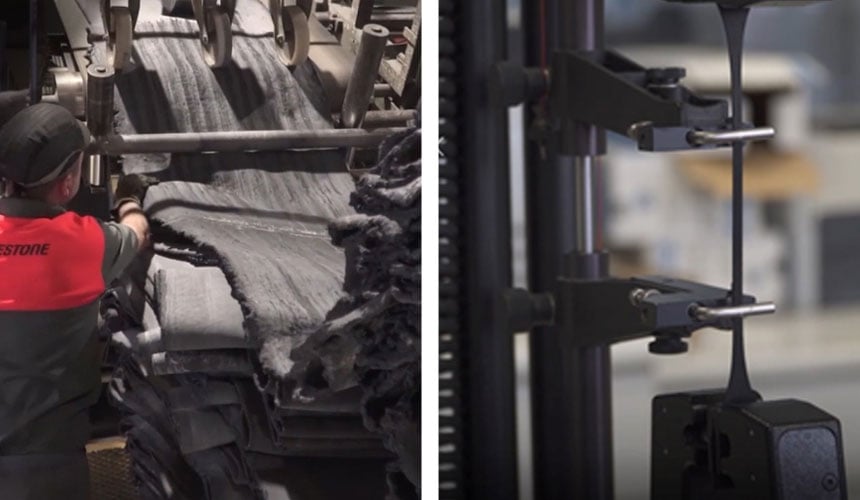 Fabrication du mélange : la gomme
Fabrication du mélange : la gomme
Test d’élasticité de la gomme en laboratoire de recherche
Research and development make it possible to improve the compounds and materials and to obtain an optimal result: more elasticity, better resistance and in the end tyres that are much more solid and long-lasting.
The role of the research laboratory is crucial, it is at the heart of technological developments involving tyres.
When you choose a Bridgestone brand tyre, the black rubber is not exactly the same as the rubber used by a competitor, within its core is the result of thousands of hours of research to obtain optimal efficiency and durability.
2. The difference in quality is also found inside the tyre at the level of the fibres
A tyre is not just the result of a rubber compound, it also contains fiberglass, nylon, polyester or cotton reinforcement layers overlapping the rubber.
This stacking of multifibre layers as well as the steel hoops make it possible to structure the tyre and give it its mechanical qualities and suppleness, increasing its resistance so that it can bear heavy loads.
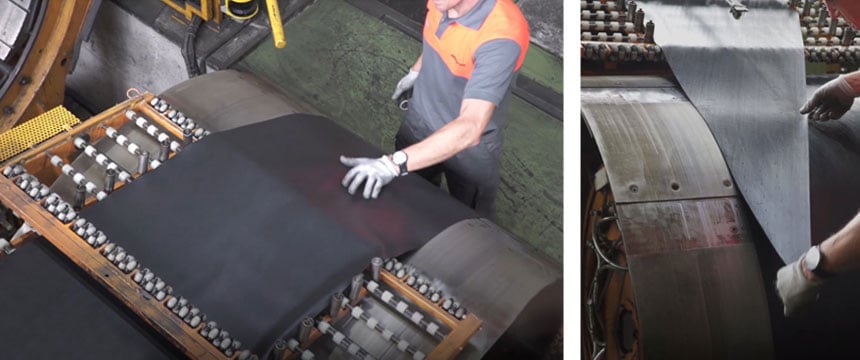
These basic components and reinforcements are now in the form of sheets, they are cut based on the size of the tyre and assembled using a rotating cylinder in a very precise order.
For very large tyres, this operation is usually carried out by hand.
- A first layer of rubber makes the tyre airtight, this is the liner.
- Then two metal hoops coated in rubber, which form the bead, are placed at the ends to maintain the tyres on the rims.
- Then the rubber coating is added to constitute the bead of the tyre, to give the supple and resistant characteristics to the tyre’s sidewalls.
- The chord plies are then added, followed by a belt made of steel or fabric chords which protect the casing.
- Lastly, the sidewalls and tread which are in direct contact with the exterior are applied, one after the other.
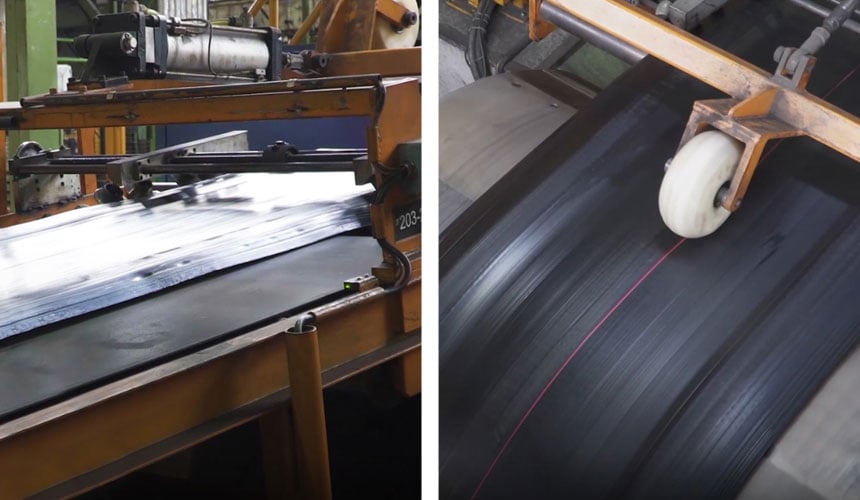
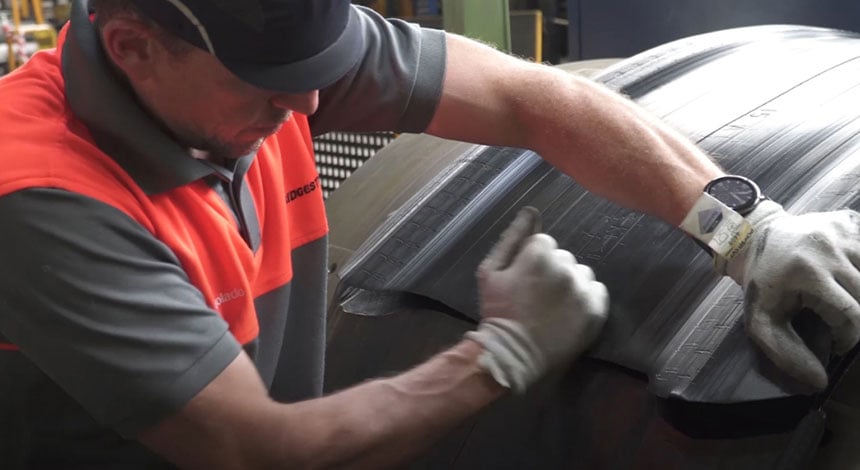
3. Complex, high-tech manufacturing techniques
Vulcanisation stage
Once this structure has been set in place, it is installed in a tyre curing mould to allow the rubber to transform from a plastic state to an elastic state and to give it its end form.
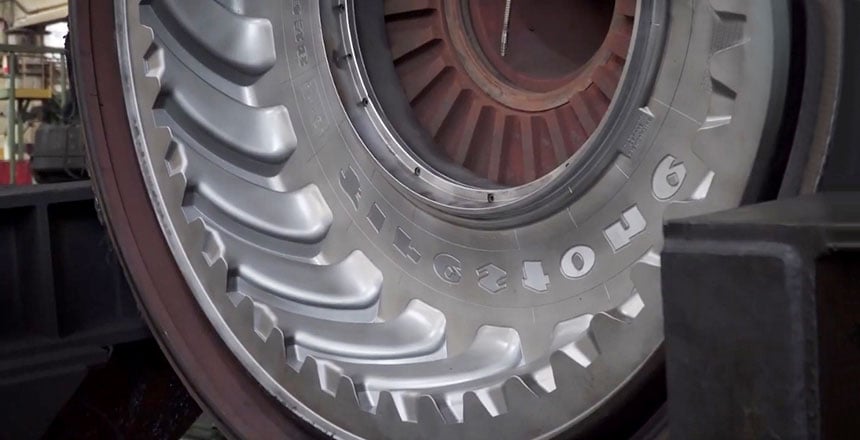
The curing process will make it possible to bind the molecule chains, it makes the rubber, which is an elastomer, deformable and more solid while preserving all its natural elasticity.
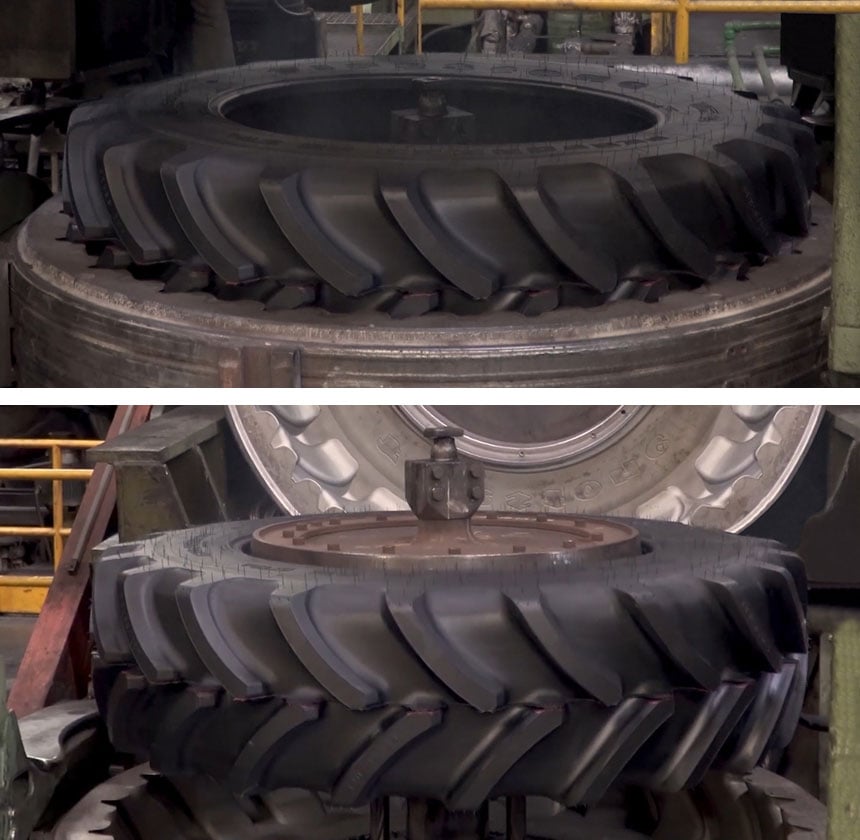
4. The quality control step is a guarantee against unpleasant surprises
After the manufacturing process, the tyres face numerous automatic control procedures to ensure that the vulcanisation process has been perfectly completed and that all the steps in the operation have been performed smoothly, such as laser trackers to detect any out-of-roundness of the tyre.
For more upmarket productions, an additional human inspection guarantees the superior quality, this allows any minor fault to be detected and perfect products to be placed on the market.
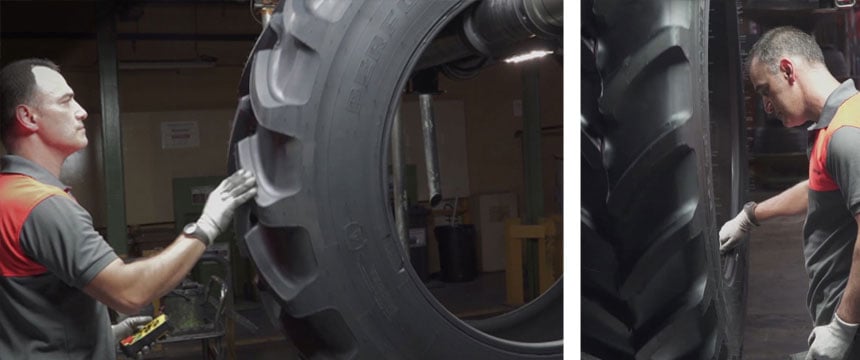
5. There is always a cost to pay for quality, which you can amortise with productivity gains
It’s no secret and in general everyone agrees that quality comes at a cost.
In the case of a tool used for professional purposes, this quality will allow you:
- to protect your soil,
- to avoid untimely punctures,
- not to have your campaign blocked at the worst possible moment,
- to enjoy more comfort in the tractor cab,
- precision driving on the road,
- to be able to count on your tyres for several years, because they will be more resistant.
The Bridgestone-agriculture.eu blog is written and administered by tractor tyre experts who are available to provide you with the advice you need on the subject of your agricultural tyres. They allow you to maximise your productivity with information on all subjects linked to tyres: Technical data for agricultural tyres – Agricultural tyre performance – Air pressure advice, Solutions to avoid soil compaction – Sprayer tyre pressure – Why and how to ballast your tractor tyres – etc….
To take it one step further and increase the profitability of your farm, les Experts du pneu provide a free, highly detailed eBook which explains the essential role of the agricultural tyre in your productivity.
Most people who read this article have also read some of the following articles which are listed by order of popularity:
- Buying guide: 10 important tips for choosing the right farming tyres
- 4000 euros in savings per year by chosing a better agricultural tyre
- How to choose tyres for my farm trailer before the harvest?
- Standard farming tyre or forestry tractor tyre for deforestation?
- Which is better value? A cheap agricultural tyre or a VF tractor tyre
- Here’s how your agricultural tyres can save you money
- How to make the right choice for your agricultural or tractor tyres?
- Increase the yield of your sprayer with narrow VF tyres
- Do you know which are the best agricultural tyres for your sprayer?
- A good agricultural tyre is the best guarantee of sprayer stability
- What is the best tyre for my combine harvester, IF, VF or CFO?
- A hi-tech agricultural tyre to save time during your harvest
- The top 5 reasons for choosing VF agricultural tyres
- The VF agricultural tyre: VF technology increases your productivity
- Cheap agricultural tyres, discount agricultural tyres, is it worth it?
This information is intended only to make you aware of the technical and functional aspects of agricultural tires and their use. It does not allow you to make a judgment or a definitive conclusion on a given problem. Only your agricultural tire expert is able to make a technical assessment and take a final decision, case by case.
Leave a
commentary
Your email address will not be published.
Required fields are indicated with *


